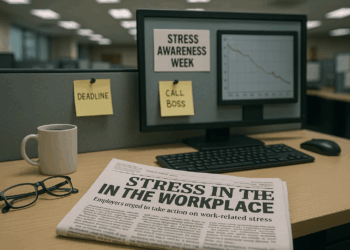Story Highlight
– Worker fell through unprotected skylight, fatal injuries sustained.
– Skyladder Construction fined £33,500 for safety violations.
– No safety measures to prevent falls from height.
– HSE emphasizes risk of working at height fatalities.
– Company failed to respond to HSE information request.
Full Story
A construction company based in Farnborough has faced a substantial fine following a tragic incident that resulted in the death of an employee who fell through an unprotected skylight. The incident highlights ongoing concerns about workplace safety, particularly regarding falls from height, which remain one of the leading causes of fatal injuries in the construction industry.
Skyladder Construction Limited was ordered to pay £33,500 in fines after being found guilty of failing to implement adequate safety measures to prevent falls at a domestic construction site. The company was engaged in building a single-storey extension with a flat roof when the incident occurred on 20 July 2022. As rain began to fall that evening, the company director and an employee returned to the site around 11pm to cover the newly constructed roof with a tarpaulin, securing it with logs.
Accompanying the employee was Bhakta Rai, who unfortunately went onto the roof to assist. During this time, he fell approximately 2.5 metres through a skylight opening directly to the concrete floor below. In an immediate effort to assist him, Mr Rai was lifted back through the opening and carried across the roof before being lowered down a ladder at the front of the property. Alarmingly, no ambulance was called, and Mr Rai was transported to the hospital in a van, where he later succumbed to severe injuries, including a spinal fracture, a fractured skull, and potential brain swelling caused by the fall.
The Health and Safety Executive (HSE) conducted an investigation following the incident and discovered significant lapses in safety protocols at Skyladder Construction Limited. Upon their arrival on 21 July, they noted that the tarpaulin had been replaced, effectively concealing the skylight opening that had contributed to the tragedy. The investigation revealed that the company had not put in place adequate safety measures to prevent workers from falling, breaching regulations meant to safeguard those working at height. Specifically, there were no protective barriers or safety nets around the skylight or the edges of the building, which could have mitigated the risk of such an unfortunate fall.
Moreover, the company ignored a directive from the HSE to provide information regarding the incident under the Health and Safety at Work etc. Act 1974. Skyladder Construction Limited failed to respond to this request for vital information, leading to further legal consequences.
During the court proceedings at Basingstoke Magistrates’ Court on 31 October 2025, it was determined that the company had breached not only Regulation 6(3) of the Work at Height Regulations 2005 but also Section 33(1)(e) of the Health and Safety at Work etc. Act 1974. In addition to the fines, the court imposed costs amounting to £8,472 and a £2,000 victim surcharge.
HSE Inspector Jenny Morris commented on the case, emphasising the need for stringent safety protocols to prevent falls from height, which are responsible for around 25% of all worker fatalities. “This incident was entirely avoidable. Mr Rai’s death resulted from a fall that should not have occurred,” she highlighted, underscoring the responsibility of employers to implement effective safety measures at construction sites.
The HSE serves as the regulatory body for workplace health and safety in the UK, dedicated to protecting the welfare of employees and promoting safer working conditions across industries. The case against Skyladder Construction Limited serves as a stark reminder of the paramount importance of adhering to safety regulations designed to protect workers from preventable accidents.
For additional information on safety regulations and best practices for working at height, members of the industry and the general public can refer to the HSE’s guidance resources available online.
































This is a tragic reminder that basic safety measures must never be treated as optional. Working at height without guarding or reliable fall protection is a foreseeable risk and employers must plan tasks, provide appropriate equipment and ensure supervision and training are in place. Late night working increases risk through fatigue and reduced visibility so additional controls should be applied. Enforcement and meaningful penalties matter, but prevention comes from robust risk assessments, clear safe systems of work and a safety culture that empowers everyone to stop unsafe work.
This tragic incident is a stark reminder that basic fall protection must never be compromised. Work at height requires proper planning, risk assessment and effective control measures such as guardrails, screens or temporary covers for openings and ensuring workers use suitable personal fall protection when collective measures are not practicable. Supervisors must ensure procedures are followed at all times including out of hours and during emergency tasks. Employers have a legal duty to identify hazards, provide training and supervision and to maintain a safe system of work. Preventable failures like this underline the need for stronger safety leadership and a culture where stopping unsafe work is supported and acted upon.
This is a tragic reminder that basic protections must never be treated as optional. Working at height carries predictable risks that require clear planning, adequate edge protection or suitable temporary coverings, proper lighting and supervision, and ensuring workers are not exposed to hazards during unsocial hours. Companies must embed robust safe systems of work, deliver effective training, and verify that controls are in place and maintained. Those responsible need to learn from this and act to prevent any repeat.